DOM
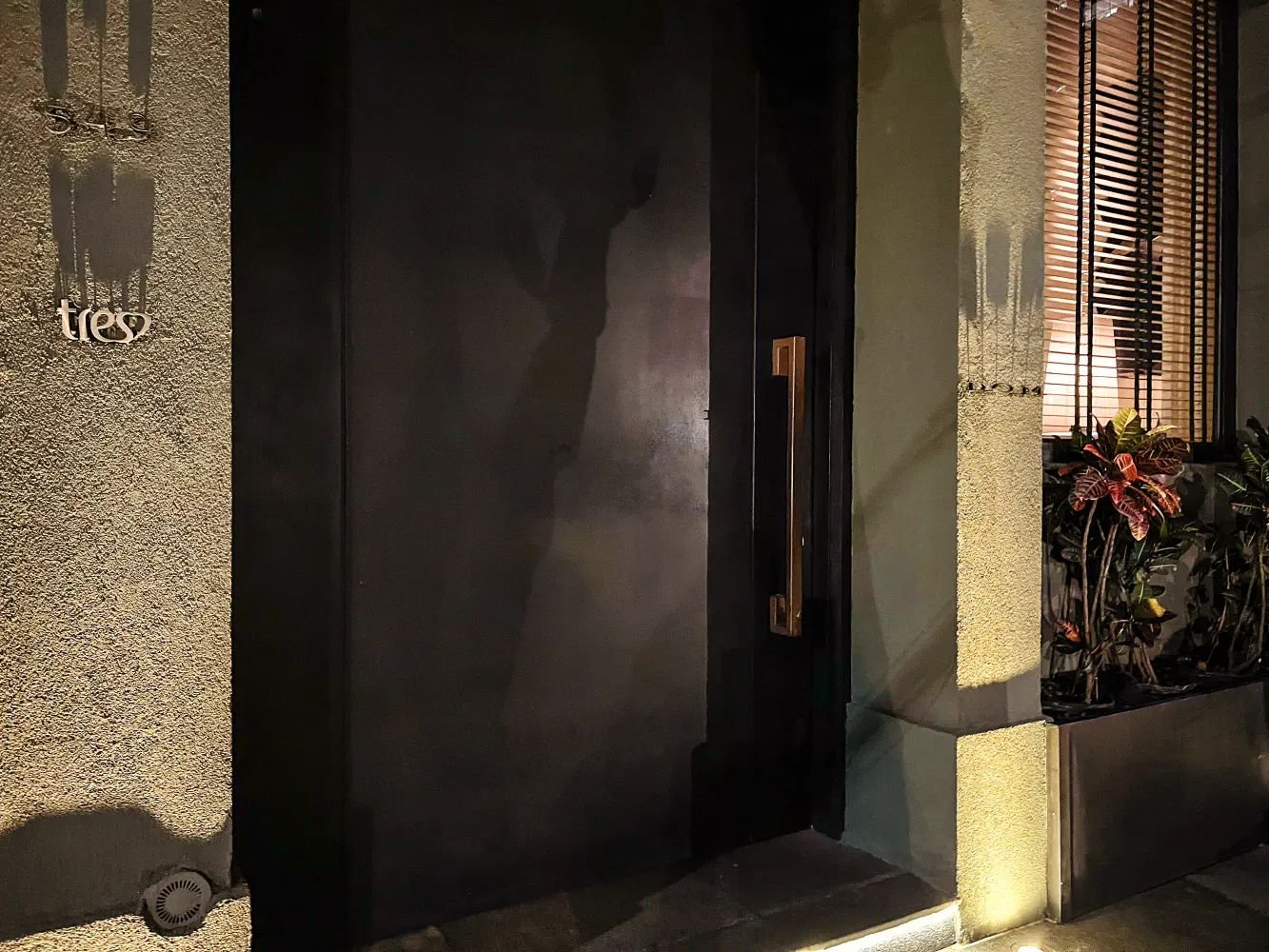
My partner made a reservation for D.O.M. months in advanced because of a Brazilian chef, Alex Atala, featured on Chef’s Table. What was very attractive to me was how he is known for using indigenous Brazilian ingredients in the dishes. My partner had also contemplated bringing me to a Japanese or Asian type restaurant, but that could not really showcase what Brazil is about.
D.O.M. was rated at 53 on World’s 50 Best Restaurants 2022 and 33 on Latin America’s 50 Best Restaurants 2022, and it has also received a Michelin 2 Star rating.
Ambiance & Service
The interior in the lower level was pretty comfy and nice. It was quite spacious for the two of us. We were seated in a large round table that seems way too big for our seating, but they also decorated it with some indigenous wooden vibes.
We saw Alex Atala working in the kitchen and also having a conversation with several of his clientele. Towards the end of the meal, he actually came up to us and expressed his gratitude in English for us going to his restaurant. São Paulo allegedly only has 5% of the population capable of speaking English, and he was definitely capable. Throughout the service, most of the waiters were able to explain the dishes in English decently. However if you are with a Brazilian, it may be preferable to have them there to translate some of the ingredients since the explanations will be much more thorough.
The total cost of the meal was R$930 for the experience with caviar serving and R$760 for the regular tasting menu. The harmonization wine pairing was R$540. They also added and included a service fee of 13% automatically on the bill.
A note to all the prices is I’ve listed them in Brazilian currency (Real). At the time of purchase, the ratio was 1 USD to 5.4 Reals. Basically, take the price listed, and divide by 5.4, and that’s what the USD equivalency is.
Food
- Aluá, Ant, and Pineapple
- Tomato, Bacuri, and Native Honey
- First Pairing
- Amuse
- Second Pairing
- Caviar
- Brazilian Cheese, Blue Crab, and PANC
- Third Pairing
- Tucupi Hollandaise
- Fourth Pairing
- Cassava Bread and Puba Hummus
- Pirarucu Moqueca
- Fifth Pairing
- Prawns and Black Rice Pasta
- Sixth Pairing
- Sirloin in Babassu Oil
- Cassava, White Mold, and Sour Honey
- Seventh Pairing
- Brazilian Nuts, Cupuaçu, and Yerba Mate
- Eighth and Final Pairing
- Sweet Cassava Flower Crumble, Coffee Ice Cream, and Chocolate Sauce
- Coconut Cake
- Canastra Cheese Sweet, Cocoa and Yanomami Mushroom, and Quindim With Priprioca
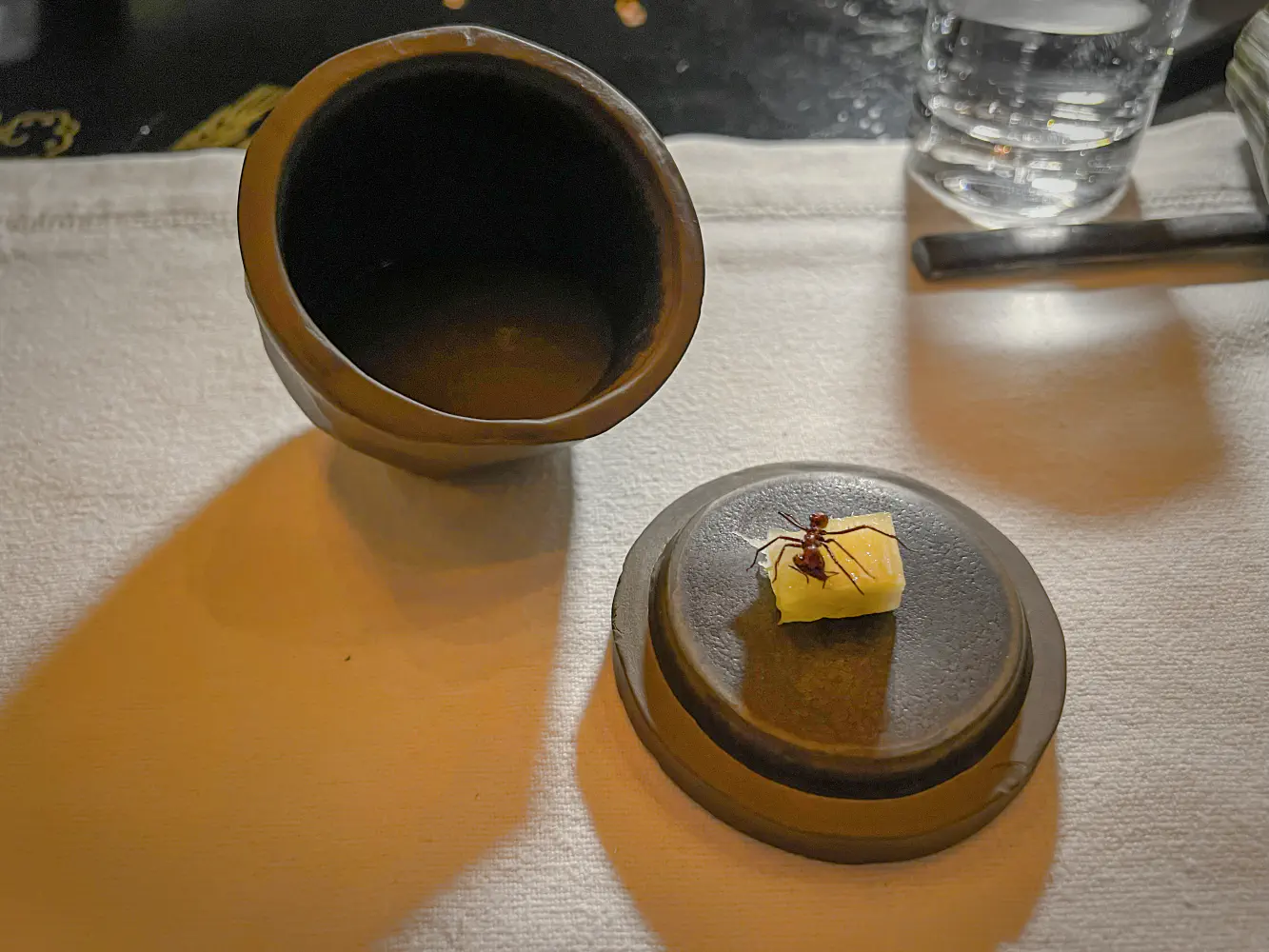
The Aluá, ant, and pineapple was a decorative display of a large ant and a fermented cocktail of ginger, pineapple, and sugar. The ant was crispy, and it had some sort of flowery, herbal flavor to it. The pineapple non-alcoholic cocktail was balanced and delicious.
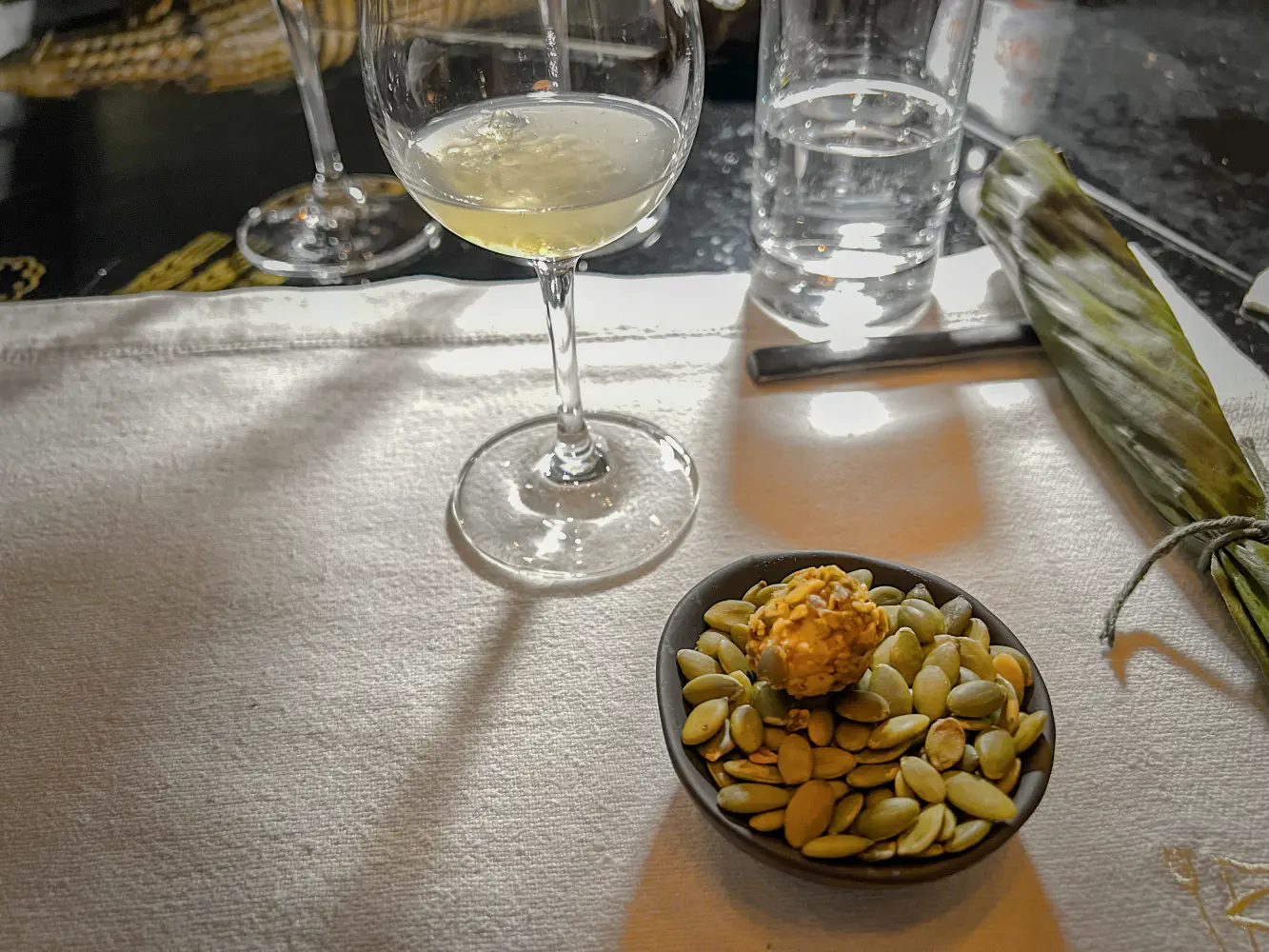
The Tomato, bacuri, and native honey came with a truffle pumpkin nugget with a fuse made of honey, cold soup made of tomatoes, and bacuri. Bacuri is nutritious fruit found in some parts of South America. The chef suggested we start with the truffle then finish with the drink. The drink reminded me of a bit of the fruit boba bubbles that pop liquid in your mouth. It was quite good.
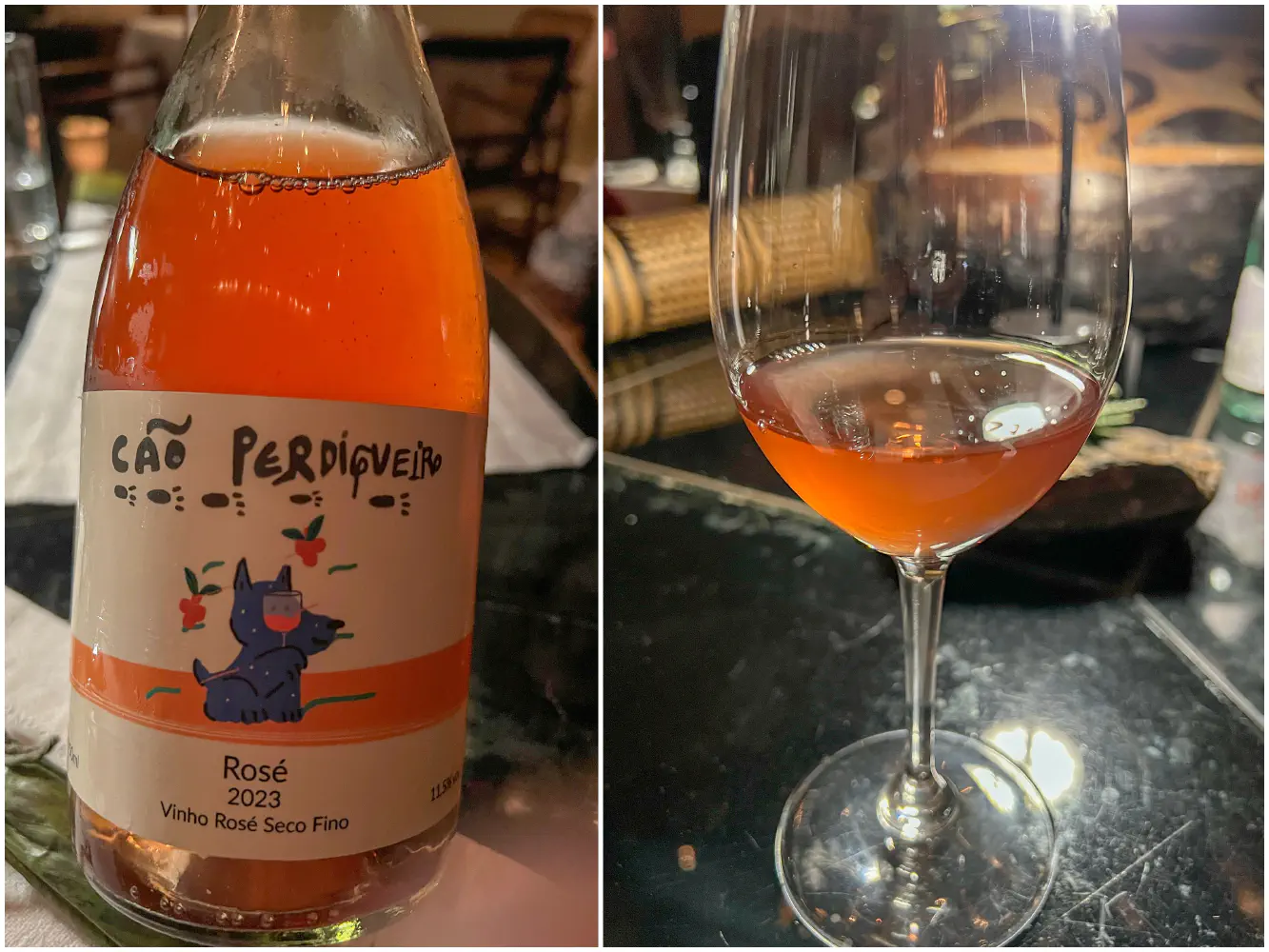
The first pairing was Cão Perdigueiro, Serra Gaucha, Brazil, 2022. This was a rose wine, and it was pleasant and balanced.
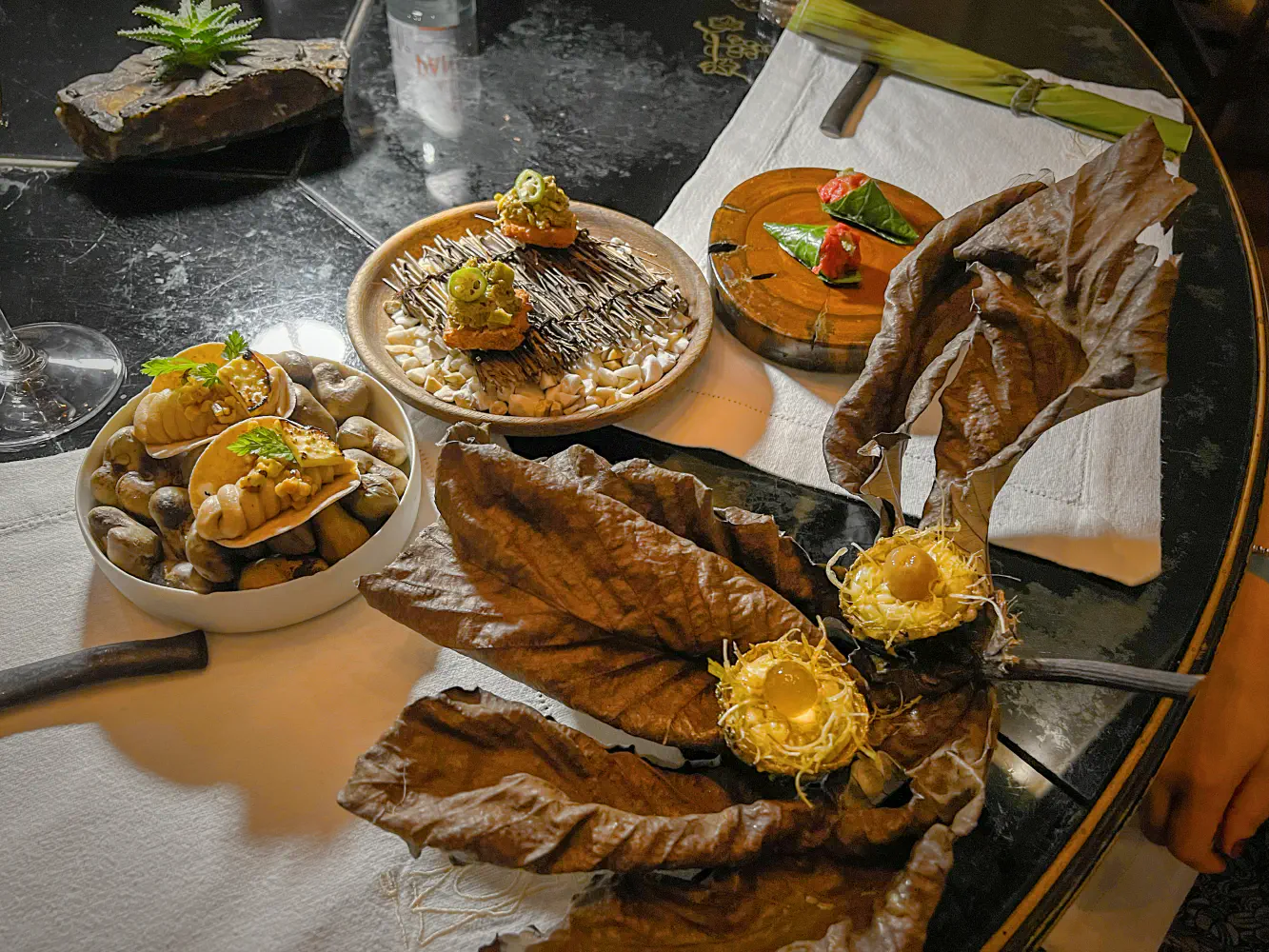
This amuse starting at the bottom, going counter clockwise:
- “catfish nest” - I couldn’t quite understand what the server said, but I remembered it tasting like catfish roe in a cream sauce.
- “watermelon and yam” - This was a temaki made with Brazilian wasabi, wasabi leaf, watermelon, and yam puree
- “rice with okra” - This was just crunchy rice with okra
- “cashew’s texture” - This was smoked cashew grounded up, smoked, and grilled on top of a chip
I thought everything here was interesting in that it reminded me of how Brazilian cuisine uses a lot of “mashed” ingredients.
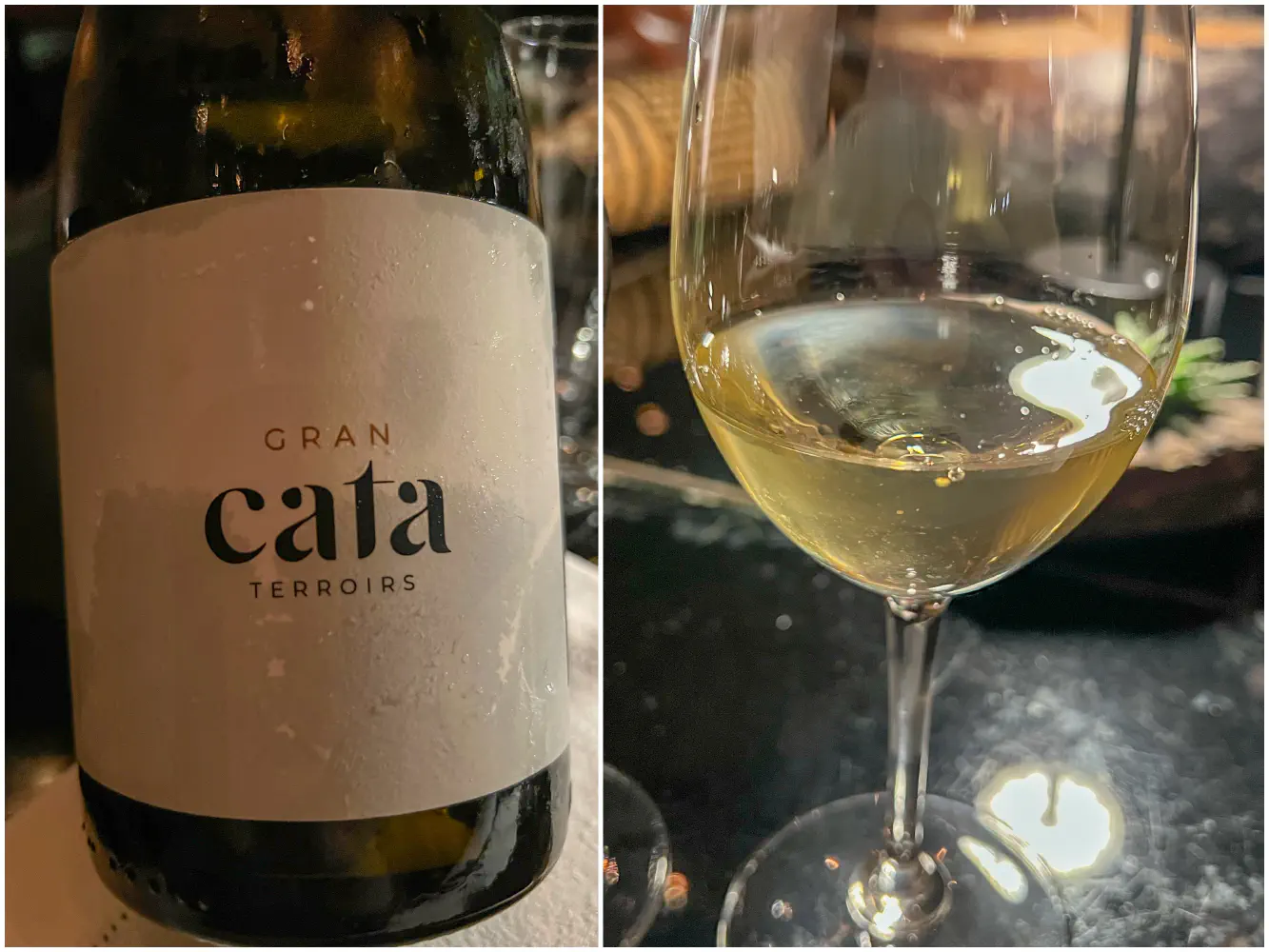
The second pairing was the Gran Cata Terroir Alvarinho, Bento Gonçalves, 2022. Bento Gonçalves is a town in southern Brazil. This was a white wine from Alvarinho grapes from the Santa Catarina area of Brazil, and it was absolutely delicious.
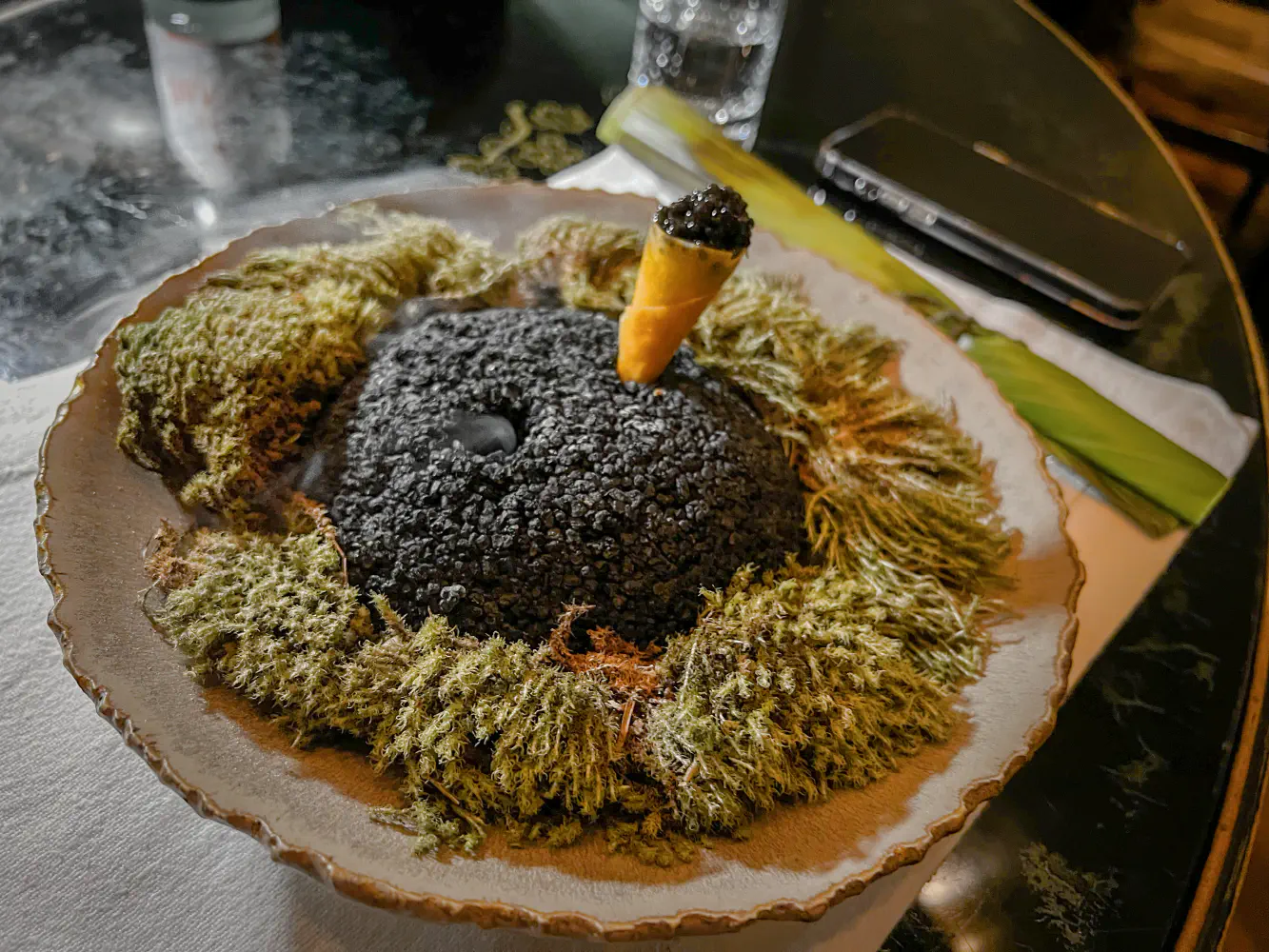
My partner ordered the caviar bump, which was just a cone of potato sorbet, creamy yolk in the middle, and a large wad of Persian caviar. Of course it was delicious.
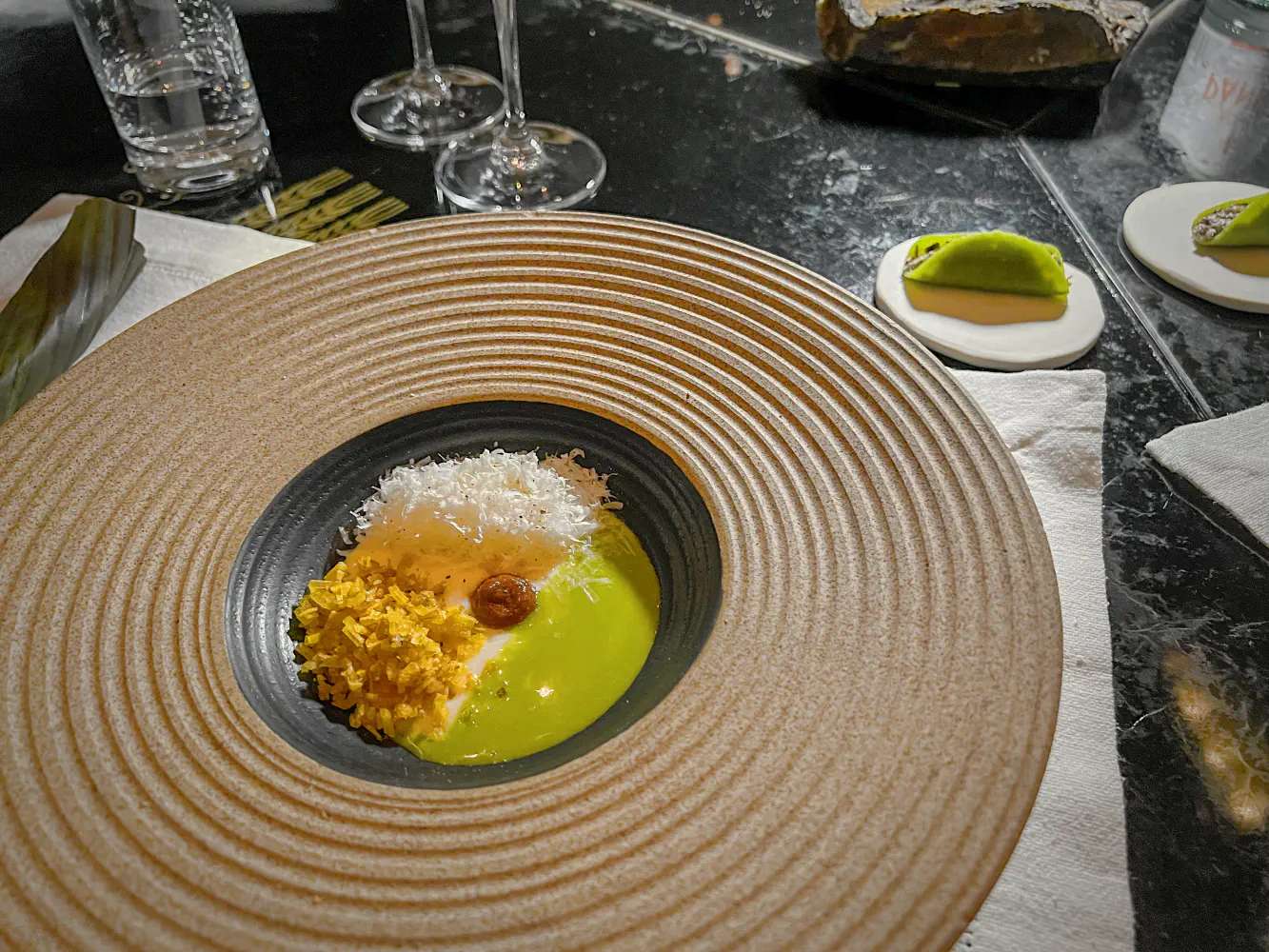
The Brazilian cheese, blue crab, and PANC which was a creamy pirão of manioc flour, crush bananas, and green puree of Brazilian herbs. They asked us to eat everything at the same time. It was definitely different flavors and difficult to articulate in my head how this tasted. The green dumpling-like wrapper in the background had the crab in it.
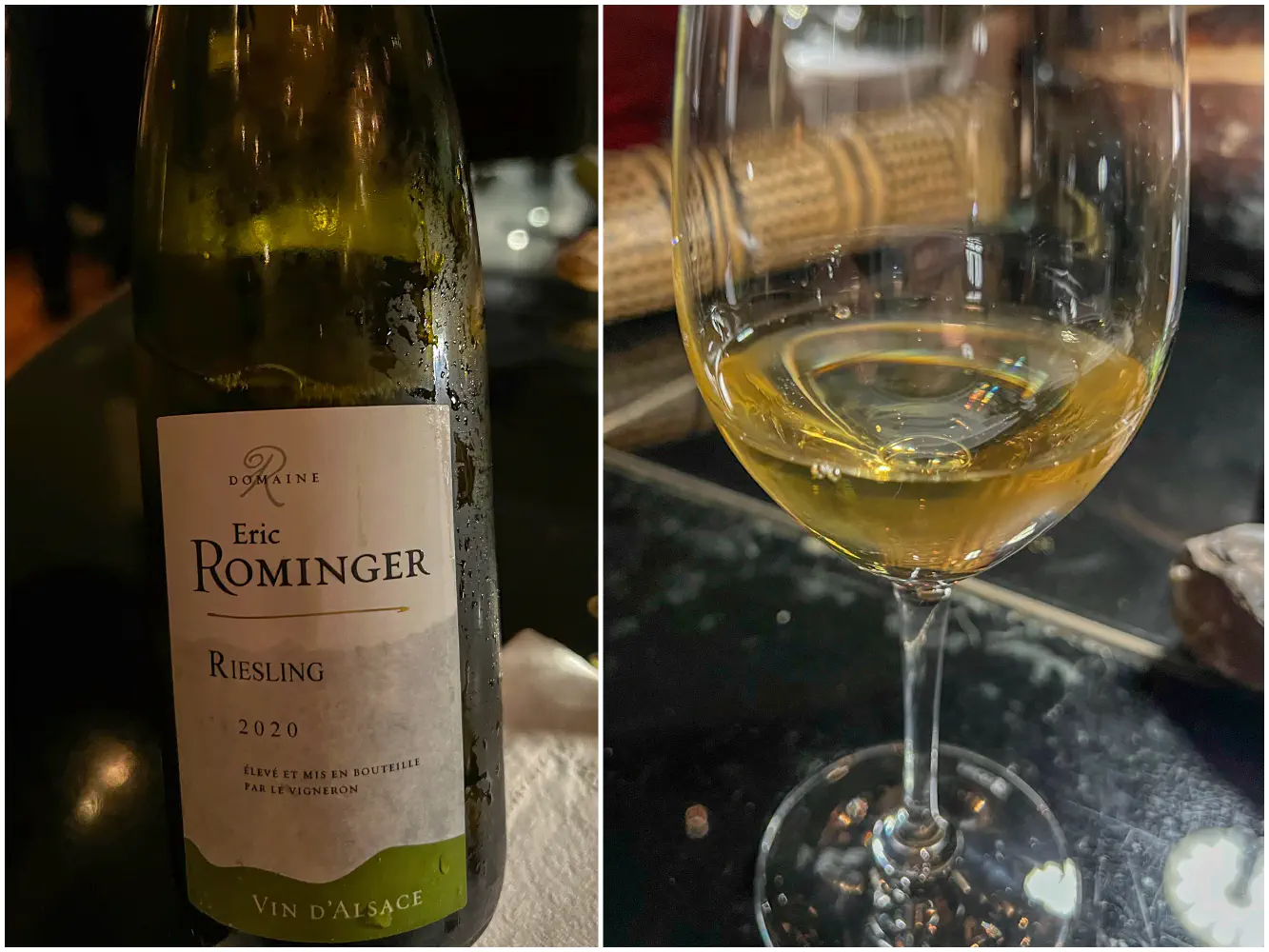
The third pairing was a riesling from Eric Rominger, Domaine Romingerl, Alsace, France, 2020. This French riesling was pretty good.
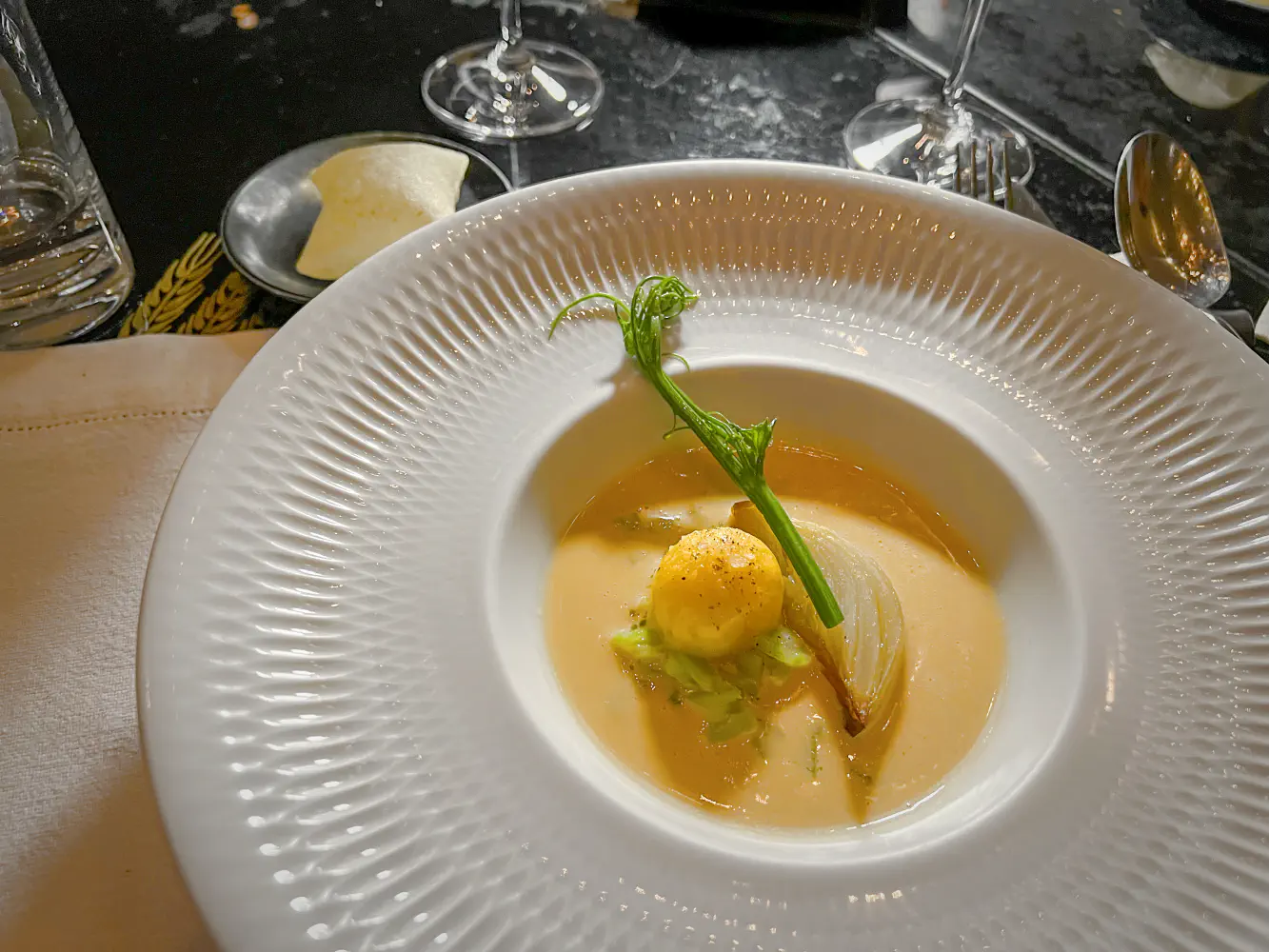
The Tucupi Hollandaise consisted of a yellow sauce that was extracted from wild manioc root in the Brazilian Amazon jungle. It came with roasted onion, shallots, and egg yolk.
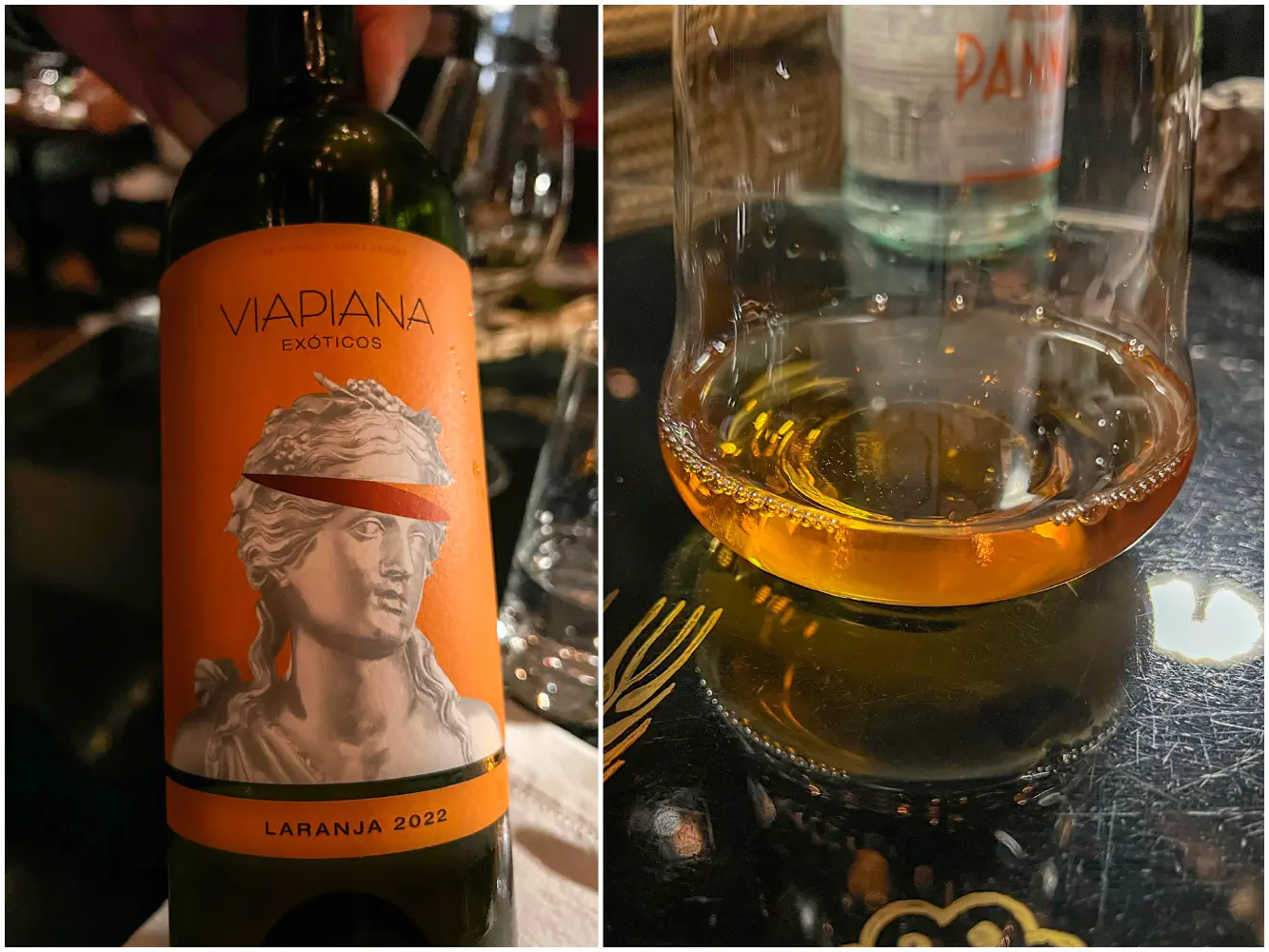
The fourth pairing was Viapiana from Exoticos Laranja, Flores da Cunha, Brazil, 2022. I was not as big of a fan of this orange wine because of how much more bolder it was compared to other orange wines I’ve had.
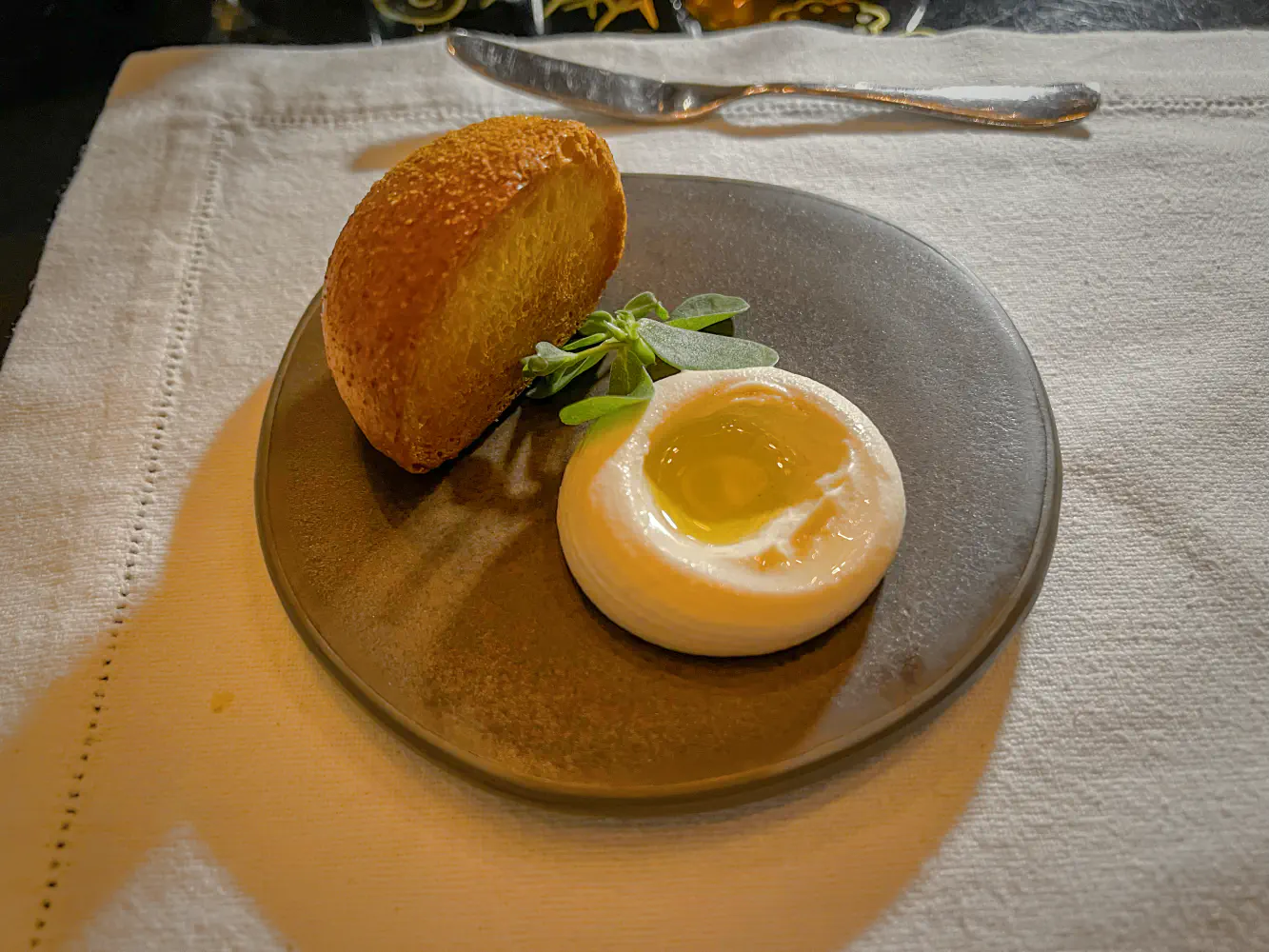
The Cassava bread and puba hummus came next. This was manioc bread served with a side of cream cheese made of fermented cassava. The cream cheese definitely tasted familiar, but the cassava added a certain depth that tasted wonderfully. The cassava bread has a certain crispy texture on the outside where it’s slightly dryer but the insides bring some good flavors.
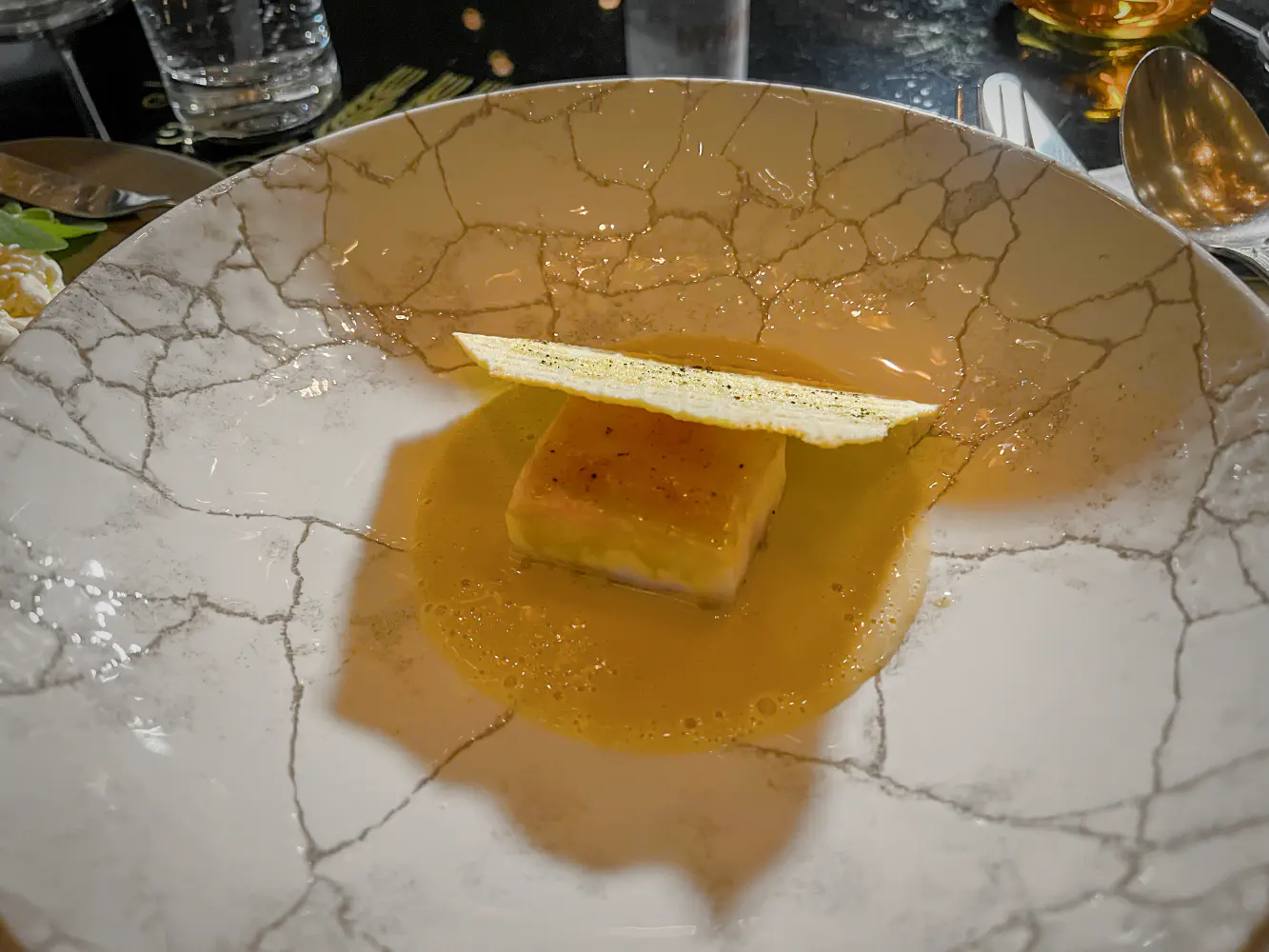
The Pirarucu Moqueca came with an Amazon fish (pirarucu) that has dense white flesh and was very tasty. It was quite lean, giving me some textural feelings of a shark. The little chip on top was made of cassava.
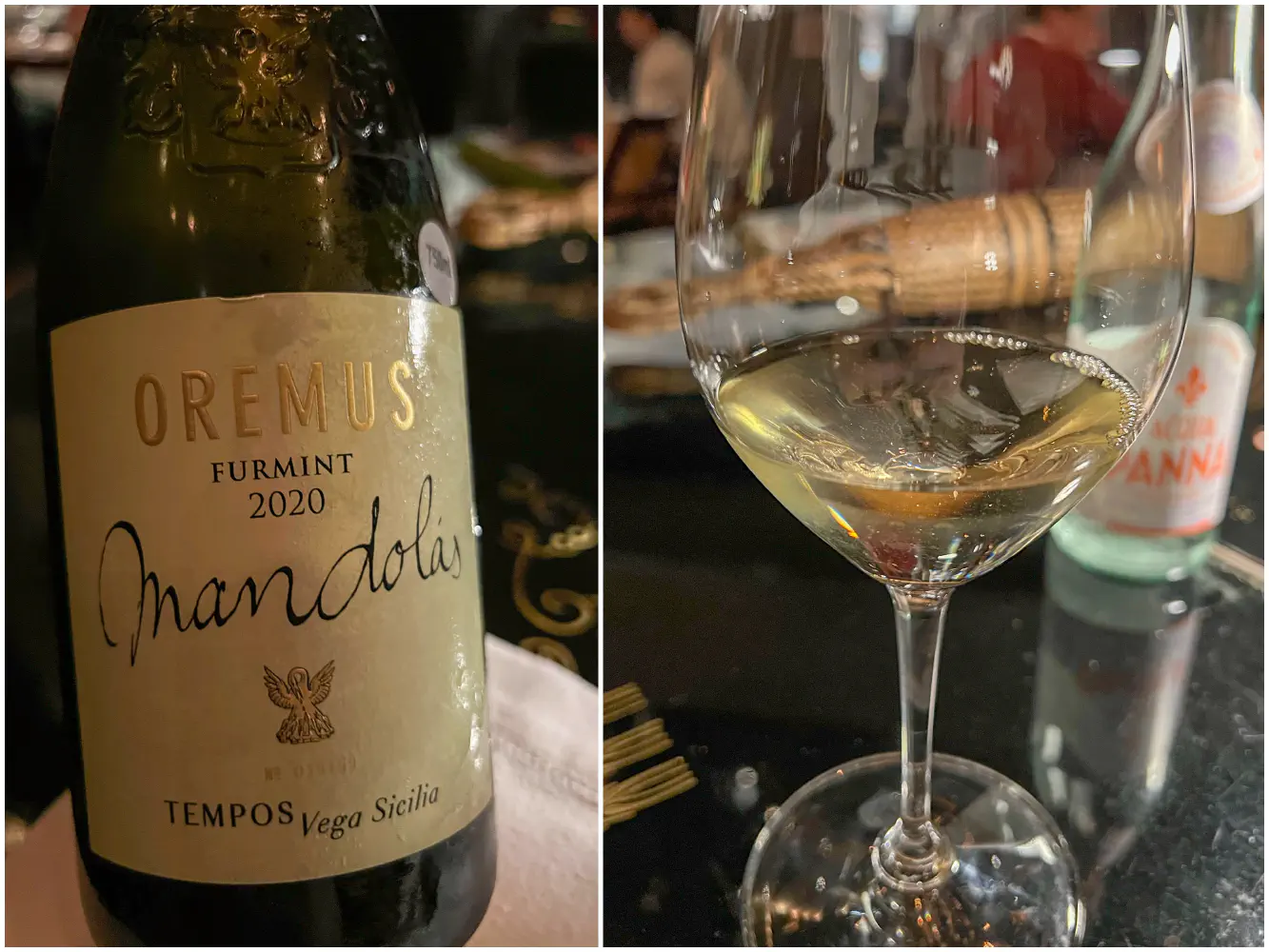
The fifth pairing was the Tokaji Furmint Mandolas from Tokaji Oremus, Vega Sicilia, Hungary, 2020. This Hungarian wine was aromatic and floral in flavors. I would love to get me one of these bottles.
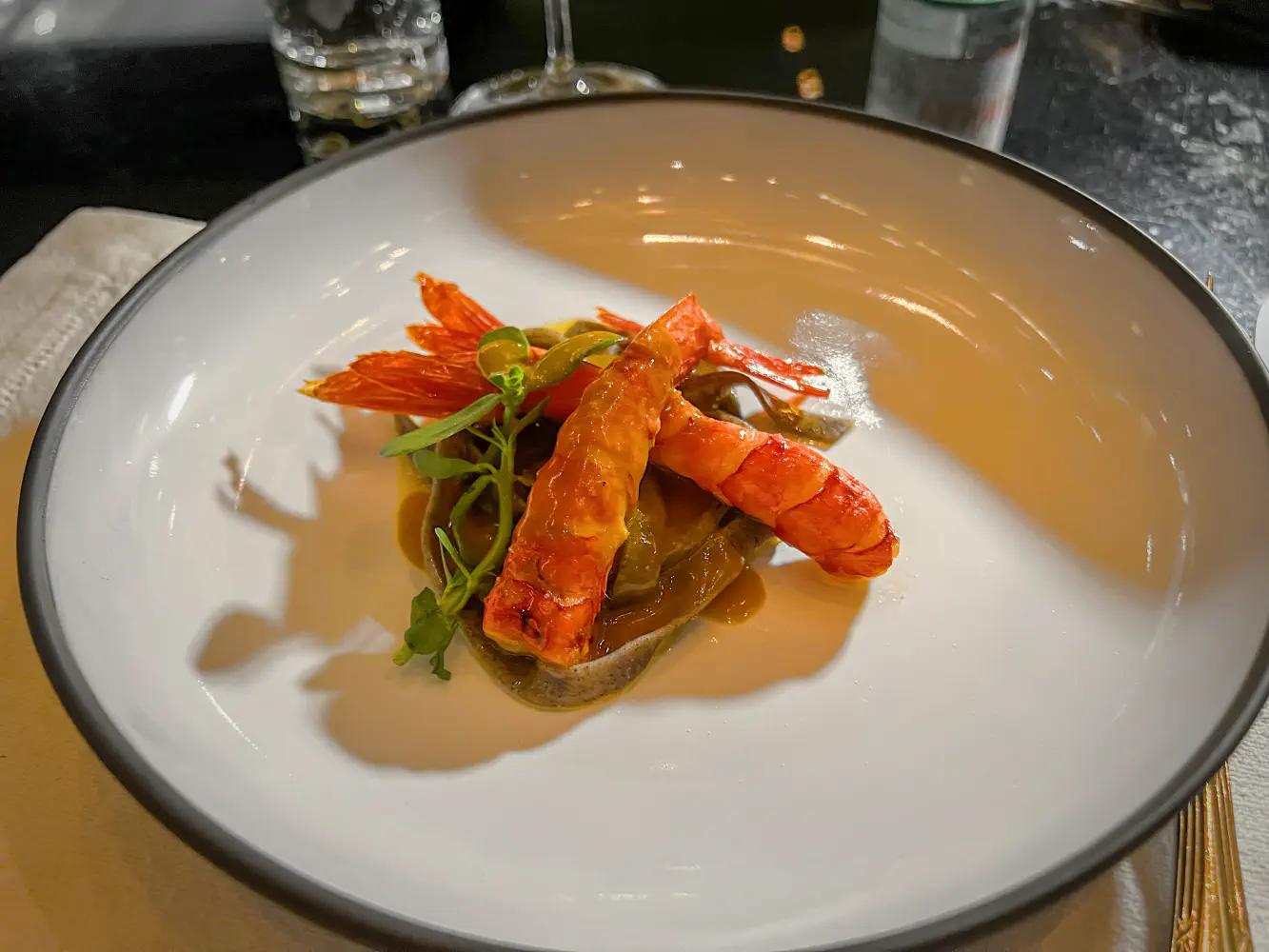
The Prawns and black rice pasta came with 2 prawns from the south of Brazil. The prawns were interesting in that they reminded me of large cocktail shrimps, but the texture was more hard and less plump than expected as if it were overcooked slightly. The black rice pasta was cooked with the shells of the prawns, so you can imagine it was quite aromatic with a lot of prawn flavors. And yes, the tails were edible. If you like that deep shell stock flavor, this was a really good dish.
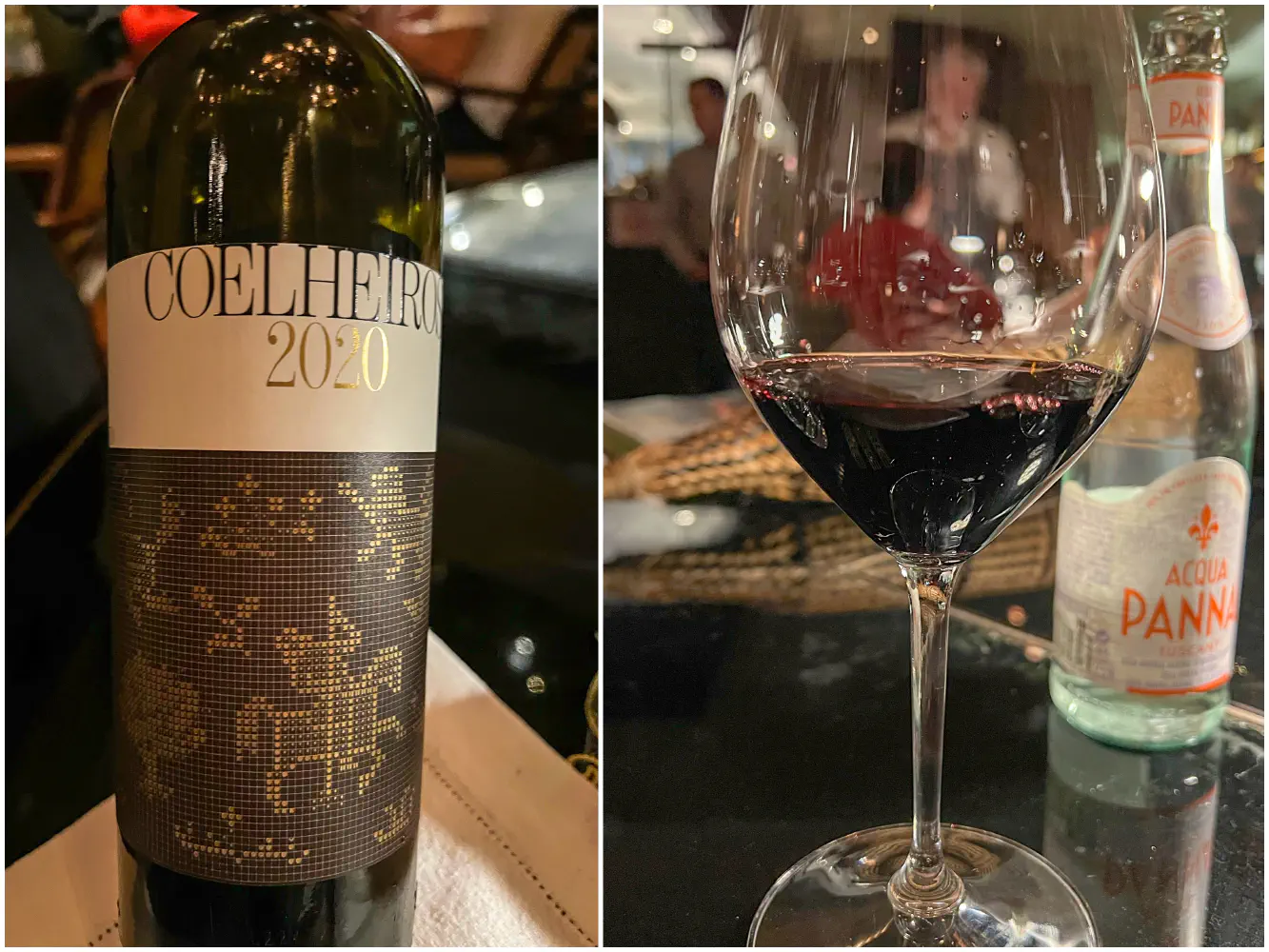
The sixth pairing was the Coelheiros from Herdade de Coelheiros, Alentejo, Portugal, 2020. This red Portugal wine was full body with rich and deep tannins and flavors. You can place your bet comfortably that the next course was going to be a red meat course.
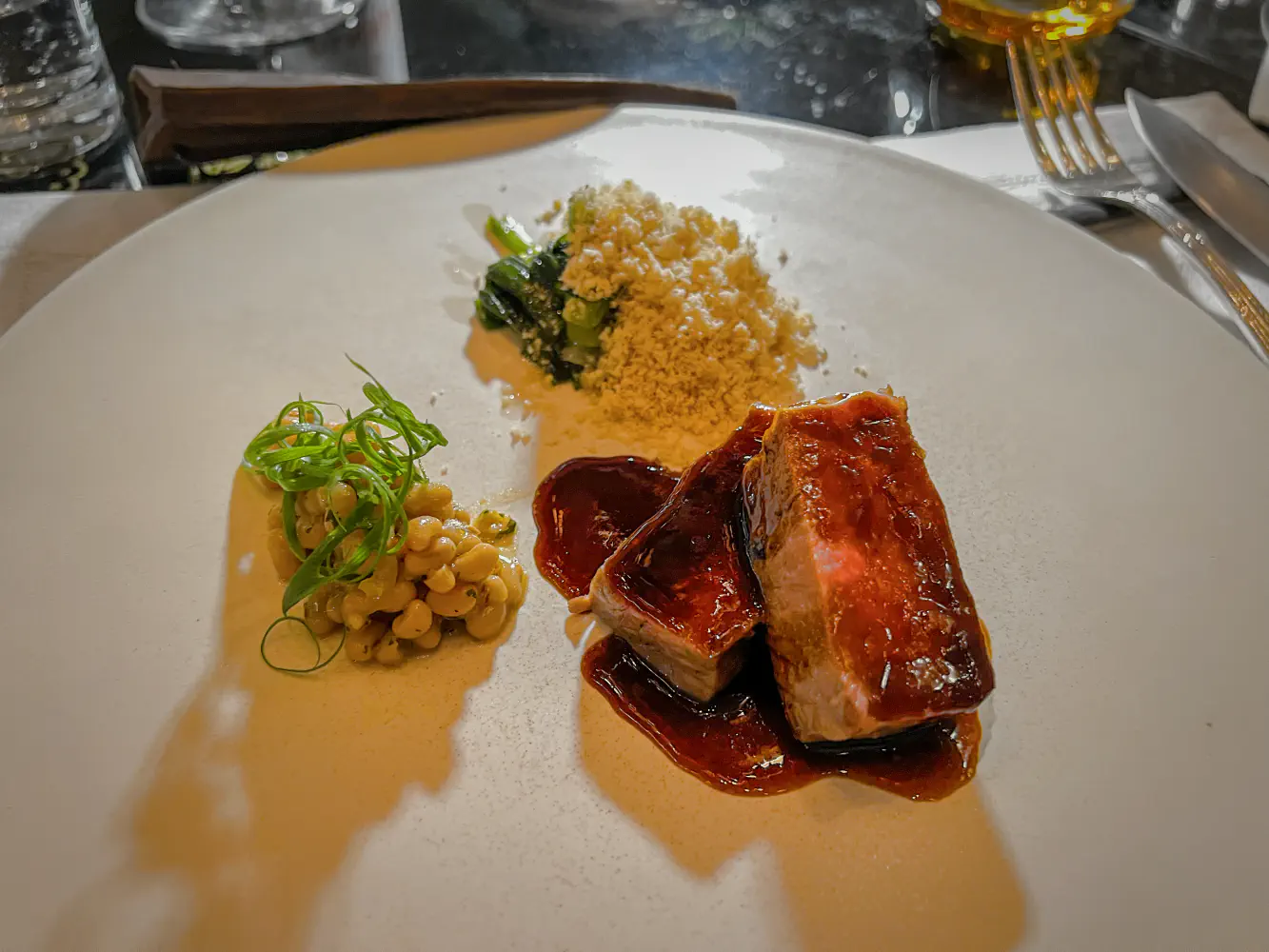
The Sirloin in babassu oil was perfectly cooked. It was cooked and confit for 48 hours in babassu oil. This is an oil extracted from the seeds of the babassu palm from the Amazon regions and is similar to coconut oil. It’s then grilled for a few minutes to give it that char. On the side, they served some water beans from northern Brazil dressed in a vinaigrette, some garlic farofa, and dressed the meat with a reduction sauce. Of course this was good, and it definitely resembled an uplifted steak dish to me.
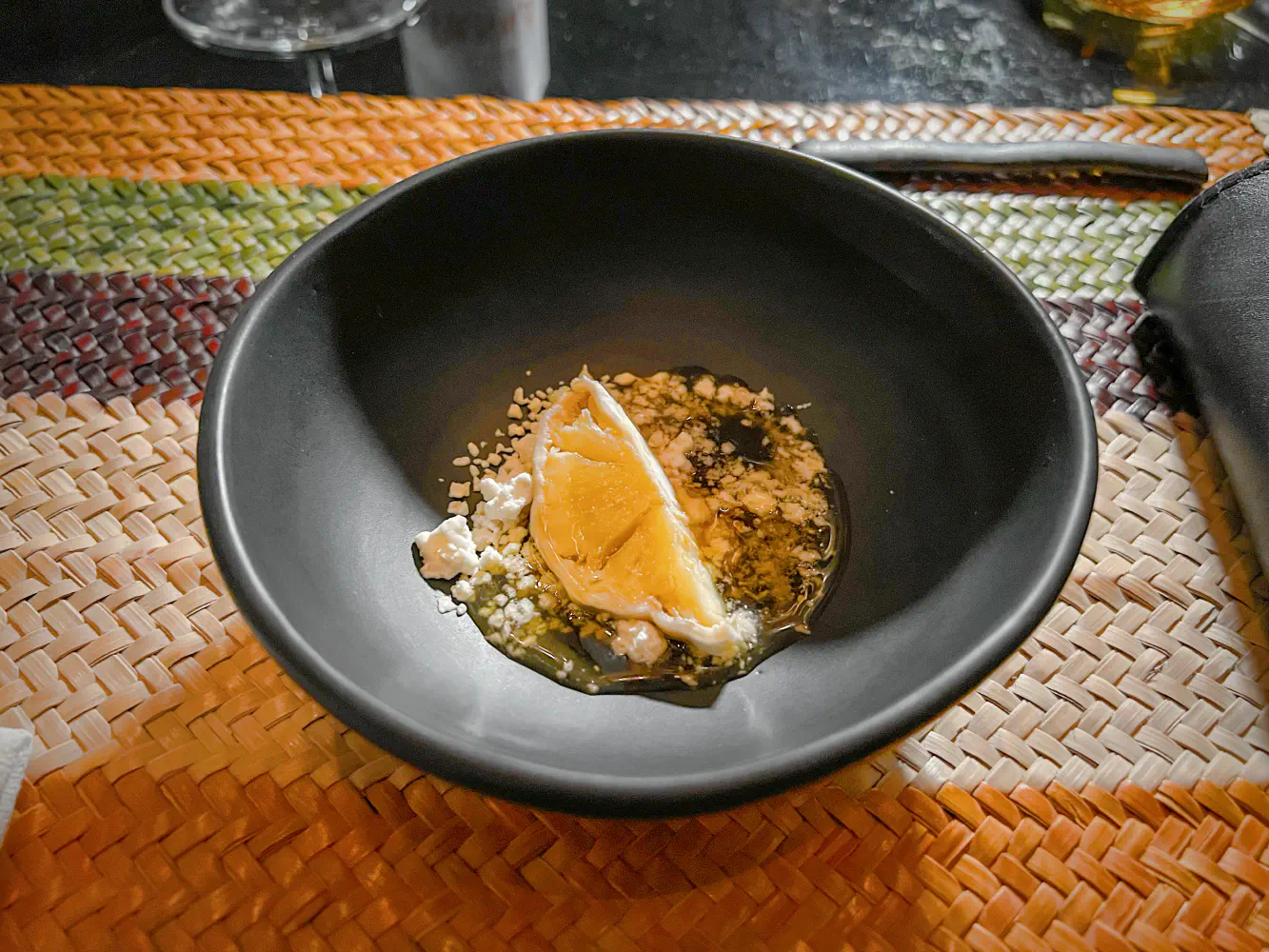
The Cassava, white mold, and sour honey was basically your step into dessert. This was basically cheese with honey.
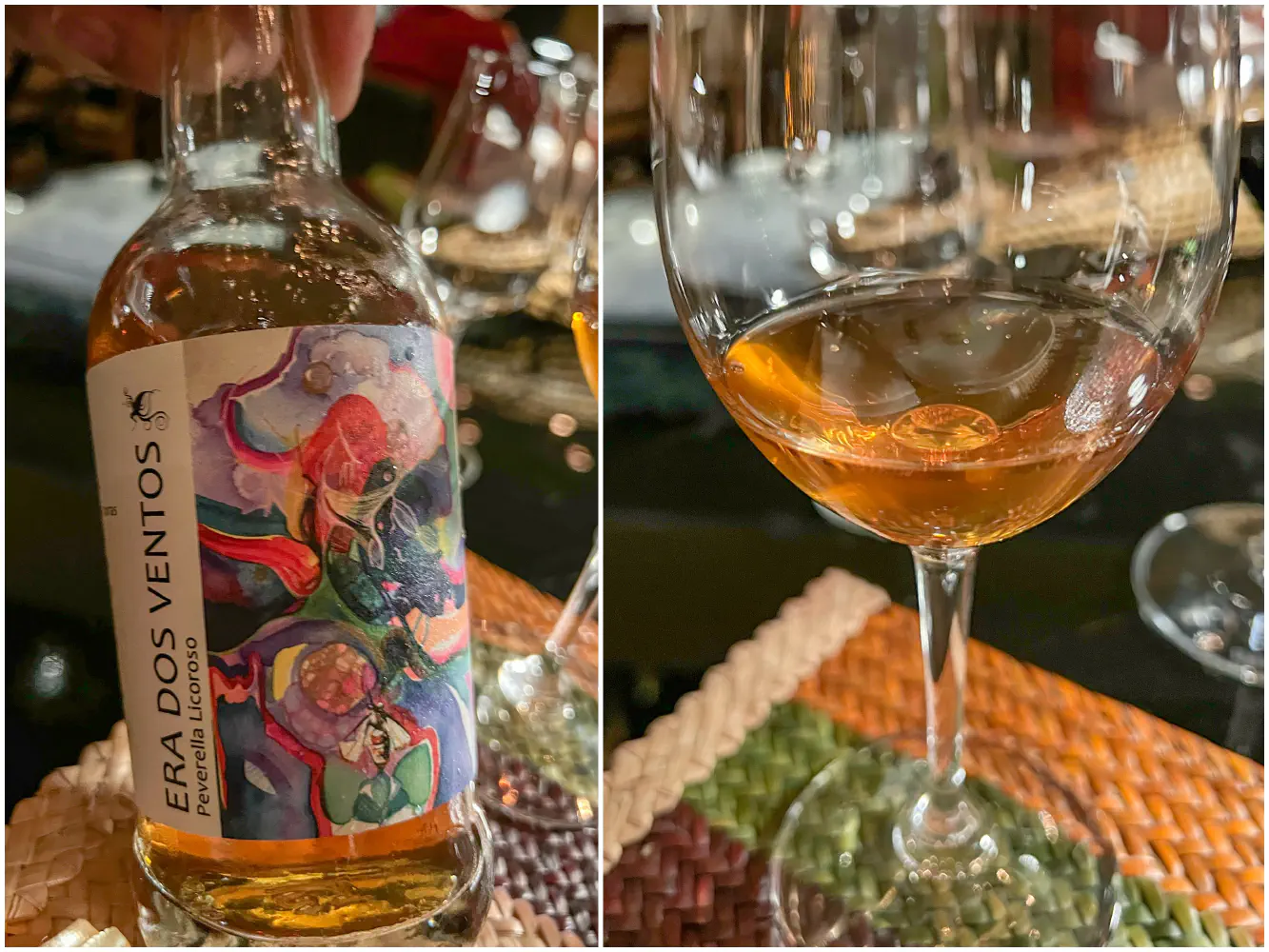
The seventh pairing was the Peverella Licoroso from Era Dos Ventos, Flores da Cunha, Brazil. This was the same wine as what we had at Evvai. This is probably going to be difficult to find in the states.
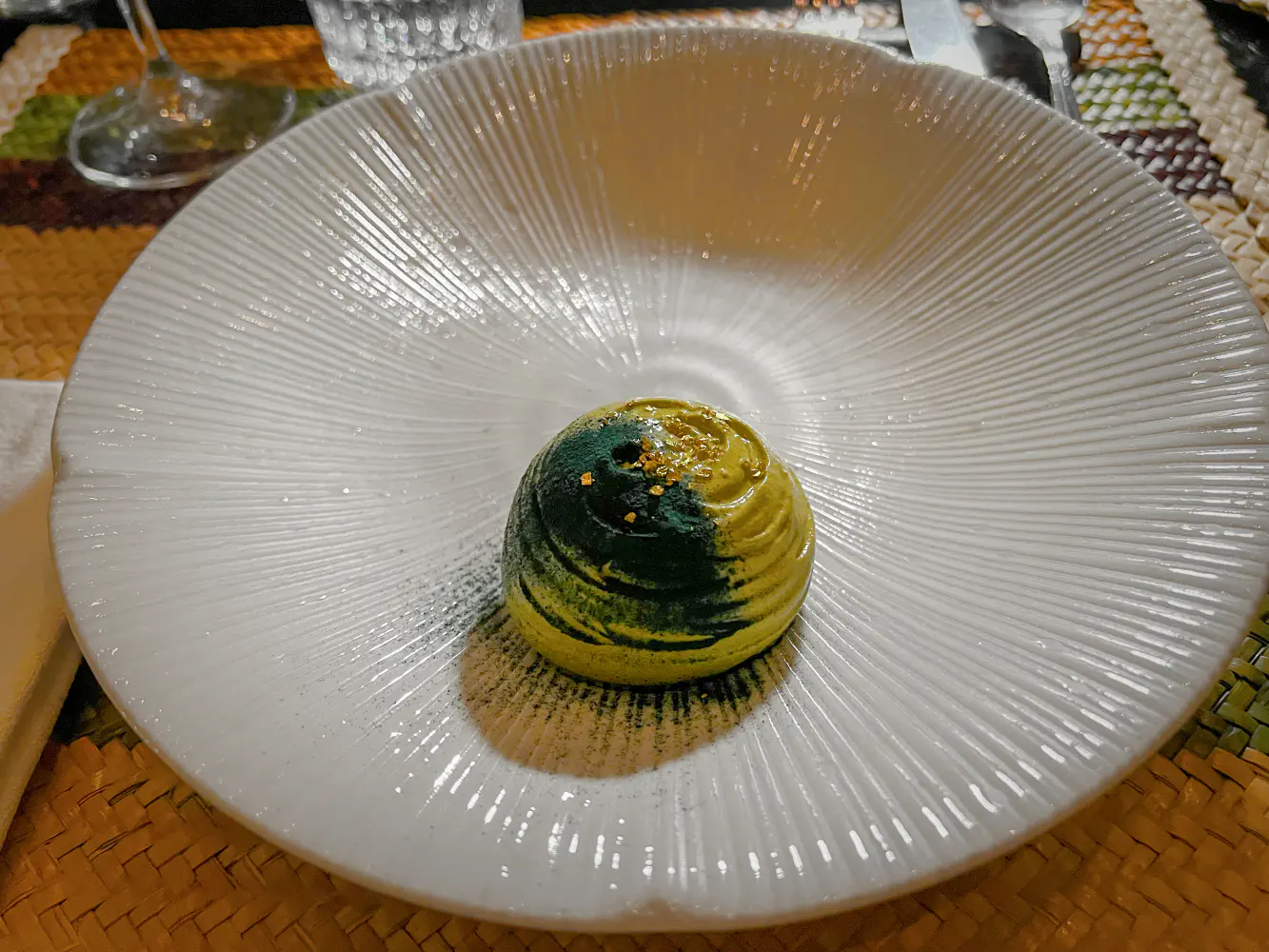
The Brazilian nuts, cupuaçu, and yerba mate was by one of my most favorite dishes of the night. Cupuaçu (pronunced “ku-pu-ah-su”) has a very delightful aroma that satiates sweet buds well. Yerba mate is a plant species in South America that provides caffeine effects. As a dessert, this was fantastic, and I’d easily order this a’la carte.
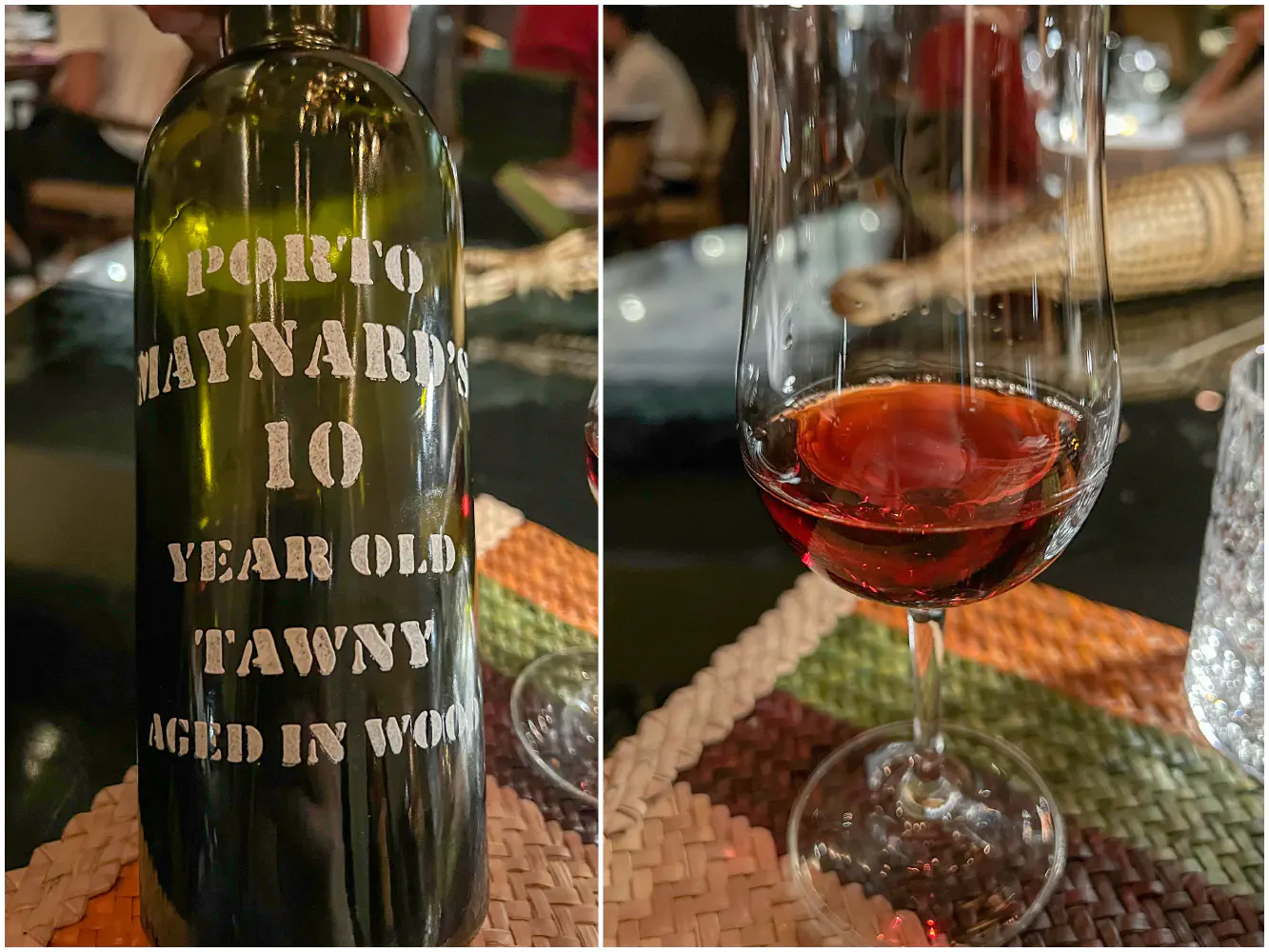
The eighth and final pairing was the Maynard’s 10 Anos Tawny from Barão de Villar, Porto, Portugal. These port wines for dessert are starting to get very addicting. This one in particular was sweet but very smooth. I definitely favor these port wines over dessert wines.
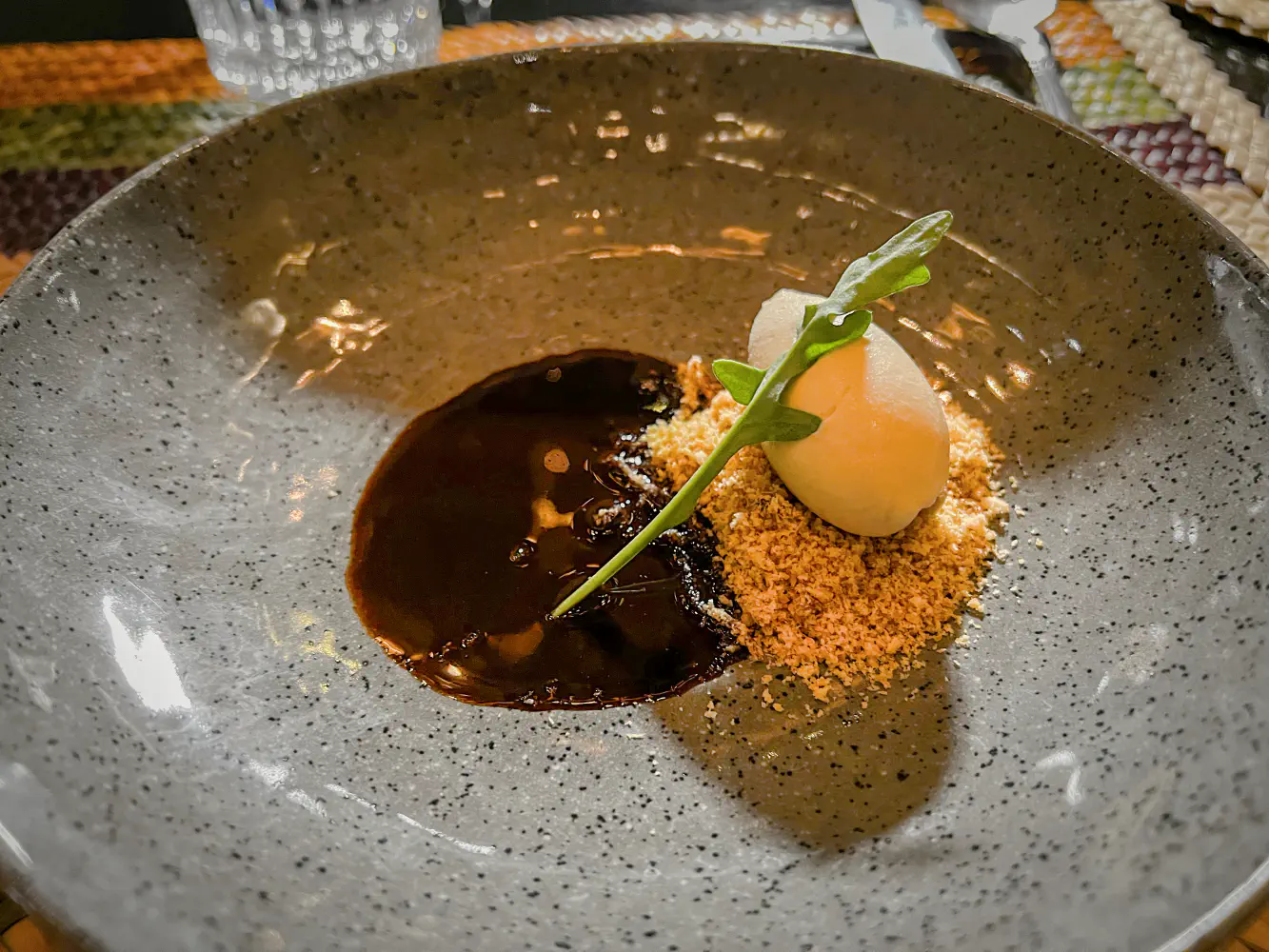
The Sweet cassava flower crumble, coffee ice cream, and chocolate sauce was delectable and balanced in sweetness.
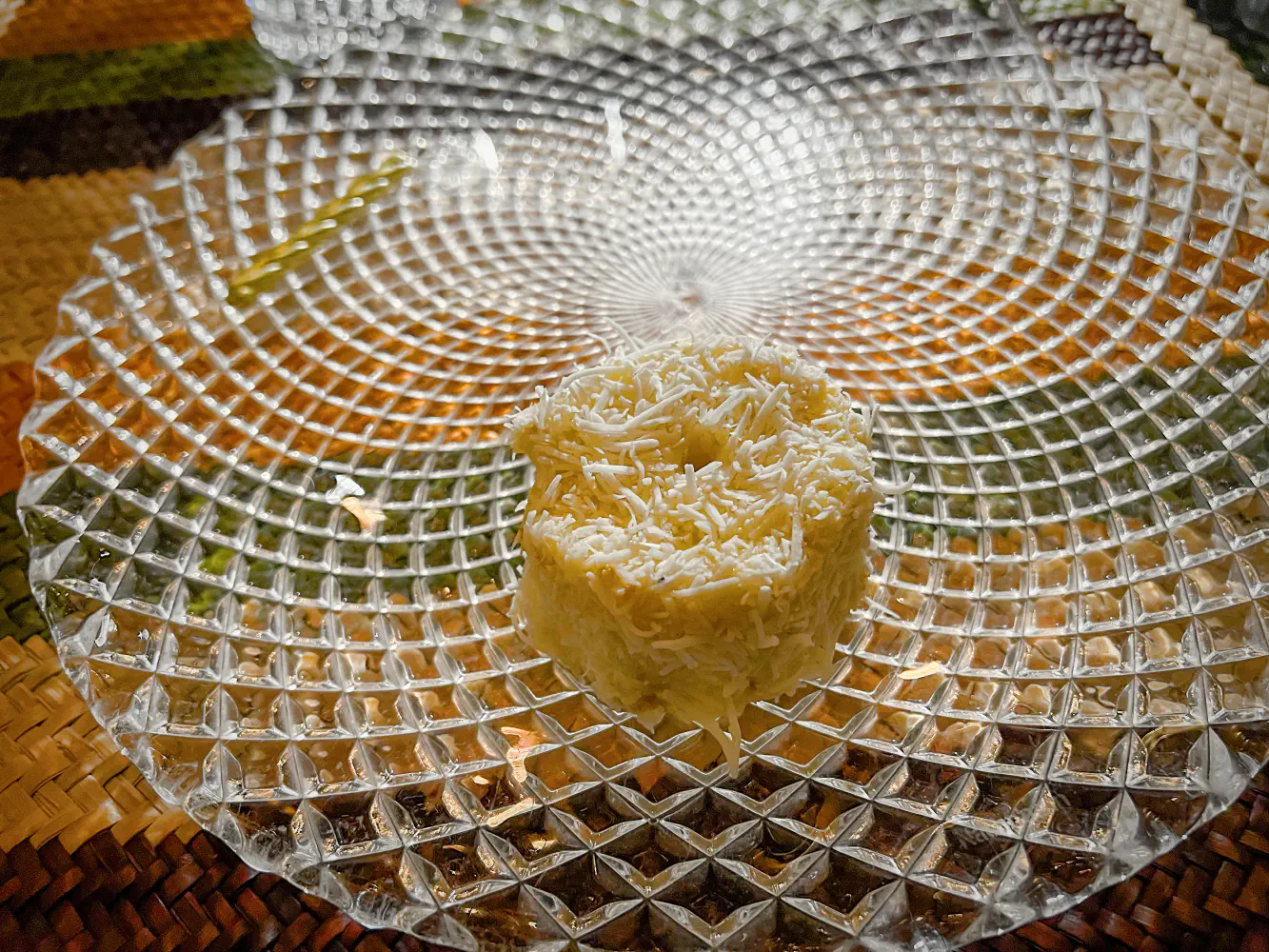
The coconut cake was a birthday gift from the restaurant, and it was very good if you like coconut desserts.
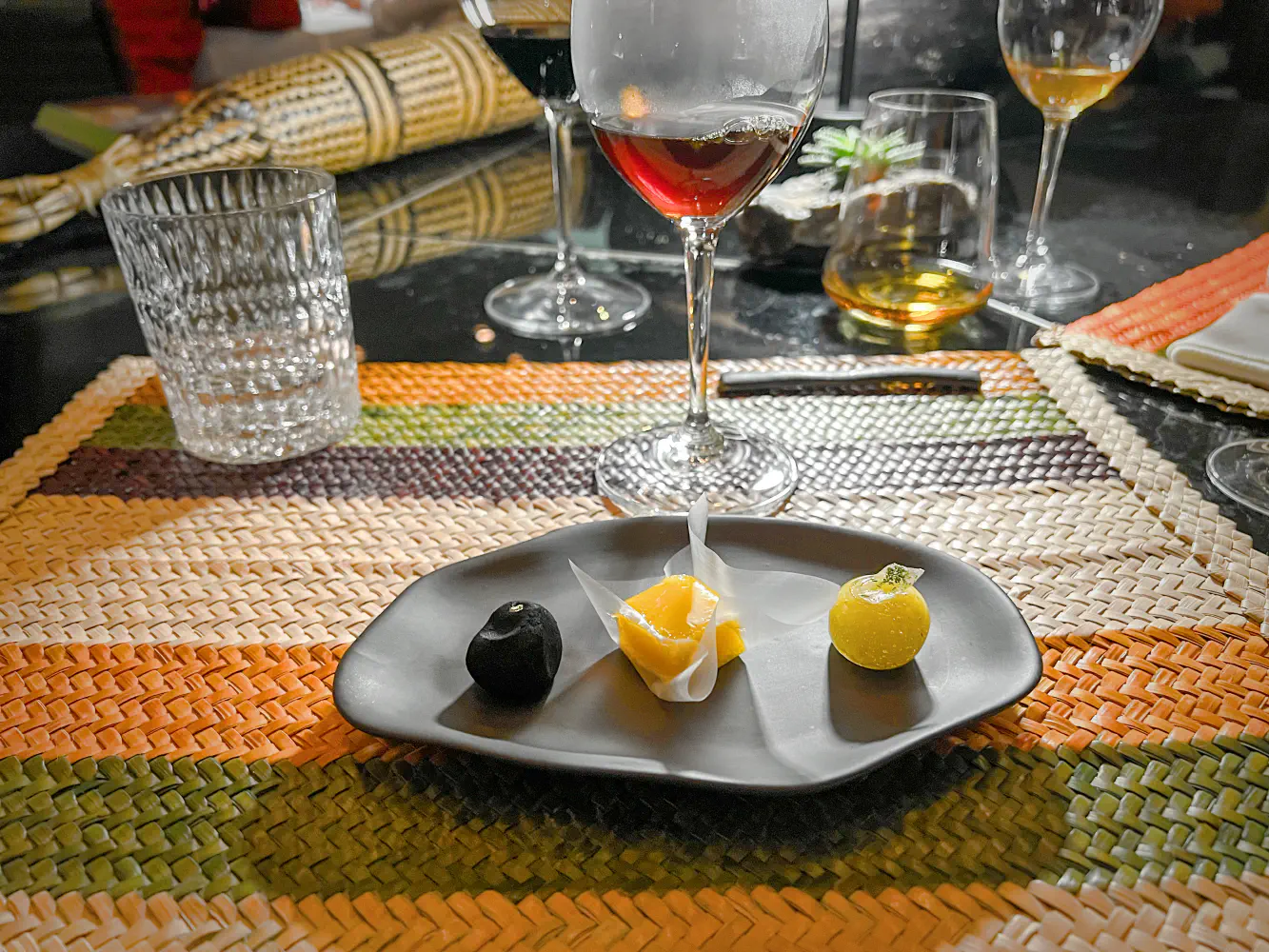
The Canastra Cheese Sweet, Cocoa and Yanomami Mushroom, and Quindim with Priprioca was a petit four to finish the night. From right to left:
- The Canastra cheese comes from Minais Gerais and wrapped with some sugar wrapper.
- The quindim (Brazilian dessert made of egg yolk and coconut) was placed in a cassava wrapper seasoned with some woody flavors of the priprioca.
- The yanomami mushroom was covered with cocoa. I definitely did not taste much of the mushroom flavors, but the texture was still mushy to me.
Overall Impression
D.O.M. was an absolutely stunning restaurant that delivered wonderfully very delicious foods that I haven’t had before. The wine pairing was also quite good too. I wish New York City offered other types of cultural upscale experiences other than the typical French or Japanese cuisines. It can’t be said enough how Alex Atala was also still working and very appreciative to all the patrons for coming to his restaurant. We highly recommend this restaurant in a visit to São Paulo.
Yelp Jabs
I was hoping for better steak so I would advise this to be improved.
This Yelp Elitist neglected to mention exactly what “better steak” meat. They cooked my steak perfectly to expectations.
The majority of the dishes were good and showed a lot of technical skill but from a pure taste perspective there wasn’t anything memorable.
I can see this being the case for those with timid palettes, but Brazilian ingredients aren’t always going to be potent as what folks in the U.S. might be used to. Many of the flavors in Brazil are quite subtle, so you do have to dig a little bit to distinguish the flavor profiles.
Revisions
- Jun 15, 2024 - Initial revision.